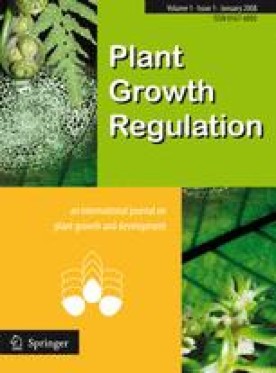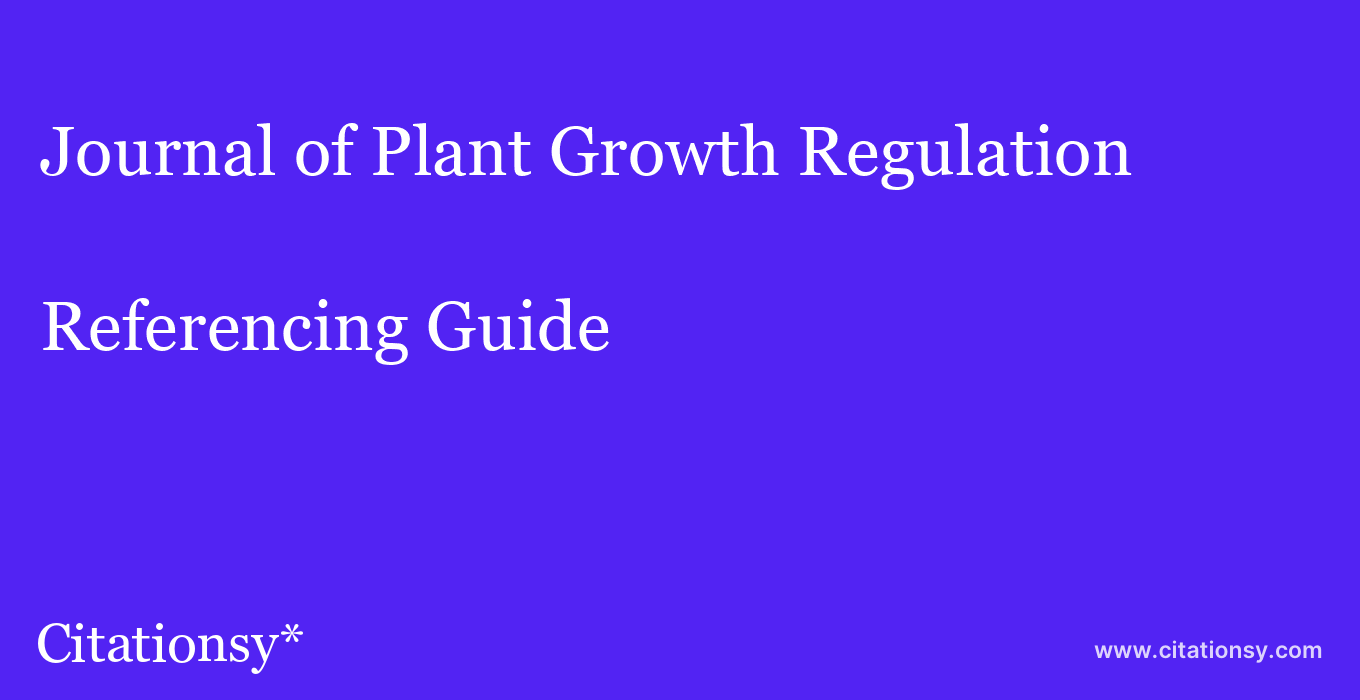Journal Of Plant Growth Regulation
The Journal of Plant Growth Regulation is a highly respected publication in the field of plant science. Its comprehensive coverage of plant growth and stress tolerance makes it a valuable resource for researchers and scientists. In this article, we will explore some of the recent developments in the field and highlight the key findings from selected studies published in the journal.
1. Plant Growth Regulation and its Impact on Crop Yield

Recent research published in the Journal of Plant Growth Regulation has shown that targeted regulation of plant growth can have a significant impact on crop yield. By understanding the underlying mechanisms that control plant growth, scientists have been able to develop innovative techniques to enhance crop productivity.
2. The Role of Plant Growth Regulators in Stress Tolerance

One of the major challenges in agriculture is the ability of plants to tolerate various stress factors such as drought, salinity, and temperature extremes. This section will discuss recent studies published in the Journal of Plant Growth Regulation that highlight the role of plant growth regulators in enhancing stress tolerance in plants.
3. Novel Approaches for Plant Growth Regulation
The Journal of Plant Growth Regulation also features cutting-edge research on novel approaches for plant growth regulation. Scientists are constantly exploring new strategies to manipulate plant growth and development for improved crop performance. This section will discuss some of the latest technologies and techniques that have been published in the journal.
Frequently Asked Questions (FAQ)
Q: What are plant growth regulators?
A: Plant growth regulators are chemicals that influence plant growth and development. They can be naturally occurring or synthetic compounds that regulate various physiological processes in plants, such as cell division, elongation, and differentiation.
Q: How do plant growth regulators affect crop yield?
A: Plant growth regulators can be used to enhance crop yield by promoting desirable traits such as increased branching, improved root development, and enhanced fruit set. They can also help plants tolerate stress factors like drought and salinity, resulting in improved overall productivity.
Q: Are plant growth regulators safe for human consumption?
A: Plant growth regulators that are used in agricultural practices undergo strict testing and regulation to ensure safety for human consumption. Regulatory bodies such as the Environmental Protection Agency (EPA) and the Food and Drug Administration (FDA) assess the safety of these compounds before they are approved for use on food crops.
These are just a few examples of the exciting research published in the Journal of Plant Growth Regulation. This esteemed journal continues to contribute to our understanding of plant growth and development, providing valuable insights for researchers and scientists worldwide.
For more information and to access the full articles mentioned in this post, visit the Journal of Plant Growth Regulation's website.
Disclaimer: The data used in this article is sourced from the Journal of Plant Growth Regulation and does not reflect the views or opinions of the AI assistant. This post is intended for informational purposes only and should not be taken as professional advice.
Journal Of Plant Growth Regulation Referencing Guide · Journal Of Plant
 Image Source : citationsy.com
Image Source : citationsy.com Brassinosteroid-Mediated Stress Responses | SpringerLink
 Image Source : link.springer.com
Image Source : link.springer.com journal brassinosteroid
Heme Oxygenase Is Involved In The Protection Exerted By Jasmonic Acid
 Image Source : link.springer.com
Image Source : link.springer.com journal
Plant Growth Regulation | Collections And Calls For Papers
 Image Source : link.springer.com
Image Source : link.springer.com Regulation In Plant Stress Tolerance By A Potential Plant Growth
 Image Source : link.springer.com
Image Source : link.springer.com plant regulation growth journal
Journal Of Plant Growth Regulation | Volume 23, Issue 2
 Image Source : link.springer.com
Image Source : link.springer.com issue volumes regulation
JOURNAL OF PLANT GROWTH REGULATION_影响因子(IF)_中科院分区_SCI期刊投稿经验_爱科学
 Image Source : www.iikx.com
Image Source : www.iikx.com JOURNAL OF PLANT GROWTH REGULATION影响因子,是几区,期刊投稿经验分享,JOURNAL OF PLANT
 Image Source : letpub.com.cn
Image Source : letpub.com.cn Plant regulation growth journal. Journal brassinosteroid. Journal of plant growth regulation影响因子,是几区,期刊投稿经验分享,journal of plant. Brassinosteroid-mediated stress responses. Journal of plant growth regulation referencing guide · journal of plant